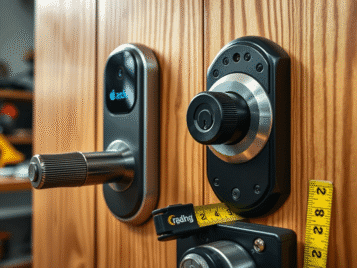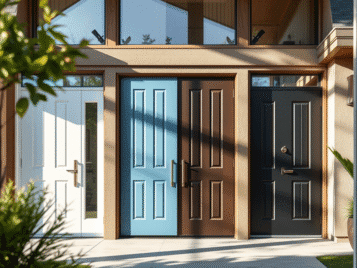Whether you’re in Chandigarh, Copenhagen, or Chicago, the fastest way to derail a project is to buy sub‑standard plywood. Warping, delamination, hidden core gaps—these nightmares can surface months after installation, costing time and cash. Fortunately, you can sort reliable suppliers from risky ones in a single showroom visit. Bring this 15‑minute checklist—refined by SamratHPL’s procurement team across four continents—and walk out knowing exactly who deserves your order.
1. Start the Clock: Minute 0 – 2
Licence & Tax ID Scan
- Ask for the business licence or shop registration displayed near the counter.
- Verify a current GST/VAT number (whichever applies in your region).
- Note the years in operation; genuine dealers rarely hide their age.
Red flag: Staff hesitate or offer a photocopy with mismatched address details.
2. Minute 3 – 5
Moisture Meter Demo
A good dealer owns a handheld moisture meter. Request a live reading on a random sheet’s edge.
- Acceptable range
- Temperate climates: 8 – 12 %
- Humid tropics: 12 – 15 %
- Read two points—centre and corner. High corner readings hint at poor storage.
Pro tip: SamratHPL BWP plywood ships kiln‑dried to < 10 %. The dealer’s reading should reflect that.
3. Minute 6 – 8
Sample Cut Inspection
Ask them to cross‑cut a small strip from a display sheet.
- Look for uniform veneer layers—no gaps or overlaps.
- Count at least seven core plies in 18 mm boards (varies by spec).
- Check glue lines: smooth, without brittle crumbs.
Red flag: Dealer refuses to cut, citing “display only.” Trustworthy shops have off‑cuts ready.
4. Minute 9 – 11
Warranty & Certification Check
- Genuine SamratHPL plywood carries a QR code stamp on the sheet edge. Scan it; the digital certificate shows batch date and grade (MR, BWR, BWP).
- Confirm the dealer provides a written warranty card at purchase—ideally 7 – 15 years depending on grade.
Watch out for generic warranty leaflets missing brand logos or batch numbers.
5. Minute 12 – 14
Stock Turnover & Storage Conditions
- Ask how often they replenish stock—active dealers turn inventory every 30–45 days.
- Inspect racks: sheets stored flat, elevated on pallets, and covered from direct sunlight.
- Sniff the air—strong mould or chemical odour indicates poor ventilation or incorrect adhesive curing.
6. Minute 15
Price Transparency & Payment Terms
- A reliable dealer quotes clearly per thickness and grade, with tax components itemised.
- Digital invoices beat handwritten slips; they protect both parties.
- Feel free to negotiate—just remember unusually low prices often mask downgraded cores or non‑boil‑proof glues.
Bonus: Global Verification Tips
| Region | Extra step | Why it matters |
|---|---|---|
| EU | Confirm CE Mark on plywood pallets. | Many projects require EN 13986 compliance. |
| USA | Look for CARB Phase 2 stickers. | Guarantees low formaldehyde emissions. |
| India & SEA | Check ISI mark and lab report number. | Ensures IS 303 or IS 710 grade legitimacy. |
SamratHPL products carry these marks as standard where regulations demand them.
Quick Reference Card
- Licence & tax ID ✔️
- Moisture < 12 % (or climate‑specific) ✔️
- Even veneer layers (no gaps) ✔️
- QR‑coded SamratHPL certificate ✔️
- Turnover ≤ 45 days ✔️
- Clear invoice with tax ✔️
Tick every box, and you’ve found a dealer ready to support your project with quality boards—not costly surprises.
Final Word
Fifteen minutes of focused checks can save weeks of repairs and thousands in rework. Trust—but verify—every claim the showroom makes. When the plywood bears the SamratHPL stamp and the dealer meets each checkpoint above, you can place your order with confidence, whether you’re lining cabinets in a Paris loft or crafting wardrobes in New Delhi.



